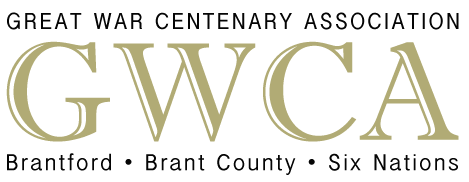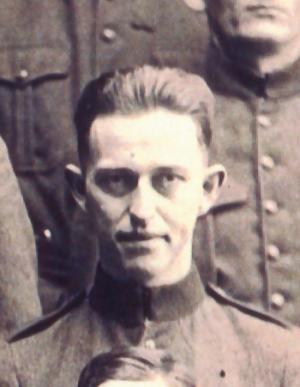BX September 20, 1918
Graphic Story of Canadians in Big Drive – Scout M.D. Secord Writes Vividly of the Big Push at Amiens – The Greatest Yet
Mrs. W. Secord, 60 William Street, has received a most interesting letter from her son, Scout Mortimer David Secord, 4th Infantry Brigade, France, telling of the big advance in August last. Scout Secord writes in part to his mother as follows:
The attack as you will have read was a big success; in fact, the biggest the Canadians have ever had. Roughly we made an advance of 12 ½ or 18 miles. When the attack started I, with two other scouts, was in the attic of a partially ruined house that had formerly been a doctor’s residence, and was about 500 yards behind the front line. We got there about 8 p.m. the night before the big push and after running our telephone wire in, so we could wire back to H.Q. how the attack was going, we retired to the cellar to await the zero hour, of which we would be advised by messenger before the inception. Finally we got it, the zero was 4.20 a.m. and at that moment all hell broke loose; in fact, there were several batteries on each side of us. The noise was so terrific that we had to shout in each other’s ear. The noise of innumerable tanks, whippets, and machine guns helped to swell the terrible chorus. Unfortunately the fog was so thick we were unable to see 100 yards ahead of us, so after the enemy’s barrage had quit we proceeded to ---- and while standing there I think that I witnessed the greatest sight that I have seen since I have been in France.
H.Q. was a big dugout, the entrances of which were just under a bank, and as I and the other scouts stood there waiting when to go forward, there was a huge procession going past towards the line. There was squadron upon squadron of cavalry, tanks, whippets, other brigades of Canadians, all going forward to go over the tops of the troops who had broken over the German front line system. On the other side of the road was a battery of heavies firing salvo after salvo, other batteries of light artillery hurried forward to go into action as the enemy had been pressed back out of range of their guns. Engineers went forward to repair the roads. Going the other way was a stream of wounded, some walking, others on stretcher. Some of these were leg wounds, not severe. They were nearly all smiling; others were silent, some unconscious, some carried by Heinie prisoners. Mingled with this motley crowd was stream after stream of prisoners, officers, N.C.O.’s and men. The men were or seemed to be happy and glad to be out of it all. The officers and some of the N.C.O.’s seemed to be very sore about it, but they were lucky they were not killed, as our fellows were out for blood. That night we slept in what had been the regimental headquarters of the Germans a few hours before, the next night in a famous valley under the stars, the next night in what had been the enemy’s divisional H.Q., the next was in a dugout in a little wood. Our observation post was a big wooden tower in the forest about 90 feet high, which swayed in the breeze until it almost made me homesick. This wood was shelled in the day and bombed by night, so you can realize that we had a lively time, but so we were ‘jake’ and safe from shell splinters. I have tried to give you a little idea of the battle; of course, not as good as if I were home. There were some things I can’t tell, of course.

